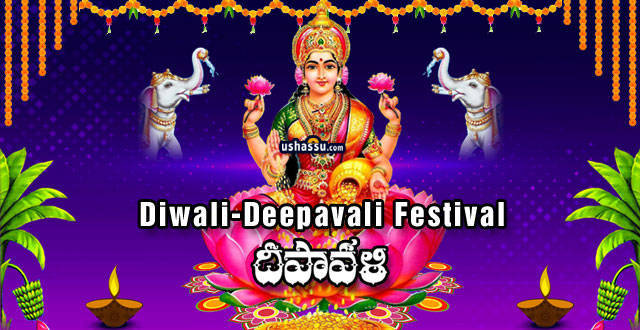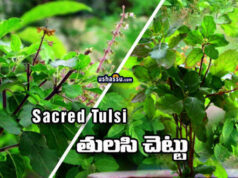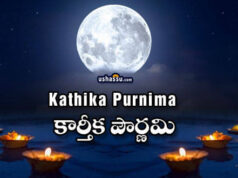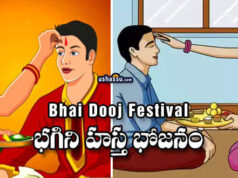Diwali, also known as Deepavali pandaga, is a major Hindu holiday that is observed globally as a celebration of happiness, wealth, and good fortune. Lighting the lamp of knowledge within ourselves means to comprehend and reflect about the significant purpose of each of the five days of festivals and to bring those thoughts into our day-to-day lives. It is the festival of lights (deep = light and avali = a row, i.e., a row of lights).
Diwali-Deepavali Festival History:
Main Legend – The Story of Rama and Sita:
Diwali is the day on which people in the north commemorate King Rama’s coronation in Ayodhya following his epic battle with the demon king of Lanka, Ravana. This includes Uttar Pradesh, Punjab, Haryana, Bihar, and the neighbouring districts.
The legendary warrior King Lord Rama was banished, at the behest of his wife Sita and his younger brother Lakshman, by his father Dashratha, the King of Ayodhya. After a 14-year exile, Lord Rama returned to his kingdom of Ayodhya and vanquished the demon Ravana of Lanka, a renowned scholar who was yet driven by evil.
Following Good’s triumph over Evil, Rama made his way back to Ayodhya. The inhabitants of Ayodhya greeted them with the lighting of rows of clay lights. It is therefore a celebration of Truth’s triumph over Evil and of Rama’s victory over Ravana.
Five Days of Diwali Celebrations
This celebration starts with “Dhan Trayodashi,” also known as “Dhanteras,” on the first day. The second day of Diwali, known as “Narak Chaturdashi” or “Chhoti Diwali,” comes after the Dhanvantari Trayodashi.
The primary day of the Diwali festival celebrations is the third day, popularly known as “Badi Diwali.” Govardhan Pooja, or the adoration of Lord Govardhan Parvat, is observed on the fourth day of the festival. Bhai Dooj, the festival’s fifth day, is dedicated to celebrating the bond between a brother and sister.
Day 1 Of Diwali Is Celebrated As Dhanteras, History Behind Dhan Trayodashi Celebration
Dhanteras marks the first day of the Diwali celebrations. Legend has it that while the Gods and the demons were churning the ocean,
On the day of Dhanteras, Dhanvantari, the physician of the Gods, emerged from the ocean carrying a pot of amrita intended for the benefit of humanity. In addition, this day commemorates the arrival of Goddess Lakshmi, who is drawn as tiny footprints using rice flour and vermilion powder.
Day 2 Of Diwali Is Celebrated As Narak Chaturdashi (Choti Diwali), History Behind Narak Chaturdashi (Choti Diwali) Celebration
One well-known legend surrounding the Diwali celebrations concerns the demon king Narakasur, who ruled over the southern Nepalese province of Pragjyotishpur. He vanquished Lord Indra during a battle and took the exquisite earrings belonging to Mother Goddess Aditi, who was not only the head of Suraloka but also a distant relative of Lord Krishna’s wife, Satyabhama.
In his harem, Narakasur also held sixteen thousand daughters of gods and saints captive. The day before Diwali, Mother Goddess Aditi’s priceless earrings were returned, the jailed daughters were set free, and Lord Krishna killed Narakasur.
Day 3 Of Diwali Is Celebrated As Diwali-Deepavali
This day is the main day of celebrating diwali, this day is also called as ‘Badi Diwali’ and is the main day of celebrations of the festival of deepavali.
Day 4 Of Diwali Is Celebrated As Govardhan Puja, History Behind Govardhan Puja Celebration
A tiny hillock called “Govardhan” is located in “Braj,” close to Mathura. According to the stories found in “Vishnu Puraan,” the Gokul community used to worship Lord Indra and pray to Him for the rains because they thought He was the one who brought about the rains for their benefit.
But Lord Krishna informed them that rain was not caused by Lord Indra, but rather by Mount Govardhan (Govardhan Paevat). They ought to worship the former rather than the latter as a result. As more followed suit, Lord Indra became enraged to the point where the people of Gokul had to deal with torrential rains.
In order to protect them, Lord Krishna approached and, after worshipping and making prayers to Mount Govardhan, raised it like an umbrella with his little finger on the right hand, allowing everyone to find cover beneath it. Following this incident, Lord Krishna was also referred to as Govardhandhari or Giridhari.
Day 5 Of Diwali Is Celebrated As Bhai Dooj, History Behind Bhai Dooj Celebration
The God of Death, Lord Yamraj, is said to have paid his sister Yamuna a visit on the day known as “Shukla Paksha Dwitiya” during the Hindi month of “Kartik.”
Yamuna welcomed Yamraj home by doing his aarti, putting a garland around his neck, and giving him a “Tilak” on his forehead. In addition, Yamuna prepared a wide range of dishes and sweets for her brother, giving Him all of them.
After devouring all those delectable delicacies, Lord Yamraj showered Yamuna with blessings and bestowed upon her a boon: if a brother pays his sister a visit on this day, he will be bestowed with prosperity and good health.
For this reason, Bhayya Duj’s day is also referred to as “Yam-Dwitiya.” As a result, the brothers’ custom of visiting their sisters’ homes and bringing them gifts on Bhai-Dooj has grown. In addition, sisters prepare a variety of meals and present their brothers with gifts.
History Of Sikh Community’s Diwali
Diwali celebrations hold particular significance for the Sikh community, as it is considered the day when their sixth Guru, Guru Har Govind ji, returned from his captivity in the Gwalior city fort. Along the route to Shri Harmandhir Sahib, also referred to as “the Golden Temple,” the people lit lamps in observance of and welcome to their beloved Guru.
History of Jain Community’s Diwali
The Jain community holds particular significance for the Diwali festival. It is the day that the renowned Jain prophet and Jainism’s founder, Bhagvaan Mahaveer, achieved “Nirvana.” As a result, the Jain community honours Lord Mahavira by celebrating the Diwali festival.
How Diwali or Deepavali is celebrated:
An old myth states that on Diwali night, Lakshmi, the goddess of wealth, visits all of our homes and bestows her blessings on those that are spotless and bright. In order to prepare for her wealth and blessings, every house undergoes a thorough spring cleaning as this festival draws near.
Each home will have a lovely, colourful Rangoli painted on the door to welcome her, and inside, there will be a variety of sparklers and small earthen lamps that add a lot of light and brightness to the space.
Commencing two days prior to Diwali, on Dhanteras, is when the real celebrations begin. Everyone makes a special effort to buy expensive items, such as jewellery and new clothes.
This is due to the fact that today is thought to be lucky for wealth and that purchasing silver or gold on this day is supposed to make you prosperous all year long. On this day, people perform Lakshmi pujans-a form of worship for the goddess Lakshmi-in their homes, workplaces, and shops.
What Rituals are Performed During Diwali or Deepavali :
Lakshmi, the goddess of wealth and prosperity, celebrates her festival on Diwali. It is thought that on Diwali, Goddess Laxmi visits everyone and bestows wealth and tranquilly upon them all. “Lakshmi-Pujan” is a nighttime performance on the eve of Diwali. In every home, a customary Pujan is held after sunset.
In front of the gods, five ghee diyas (lamps) are lit, traditional sweets called naivedya are offered to the goddess, and devotional songs are sung in honour of Goddess Lakshmi. People light diyas, or lamps, in their homes following Deepawali Puja to welcome light and drive out darkness.
Since cattle are the primary source of income for farmers in villages, cattle are decorated and revered. Cows in the south are offered special veneration as they are supposed to be the incarnation of Goddess Lakshmi and therefore they are adorned and worshiped on this day.














